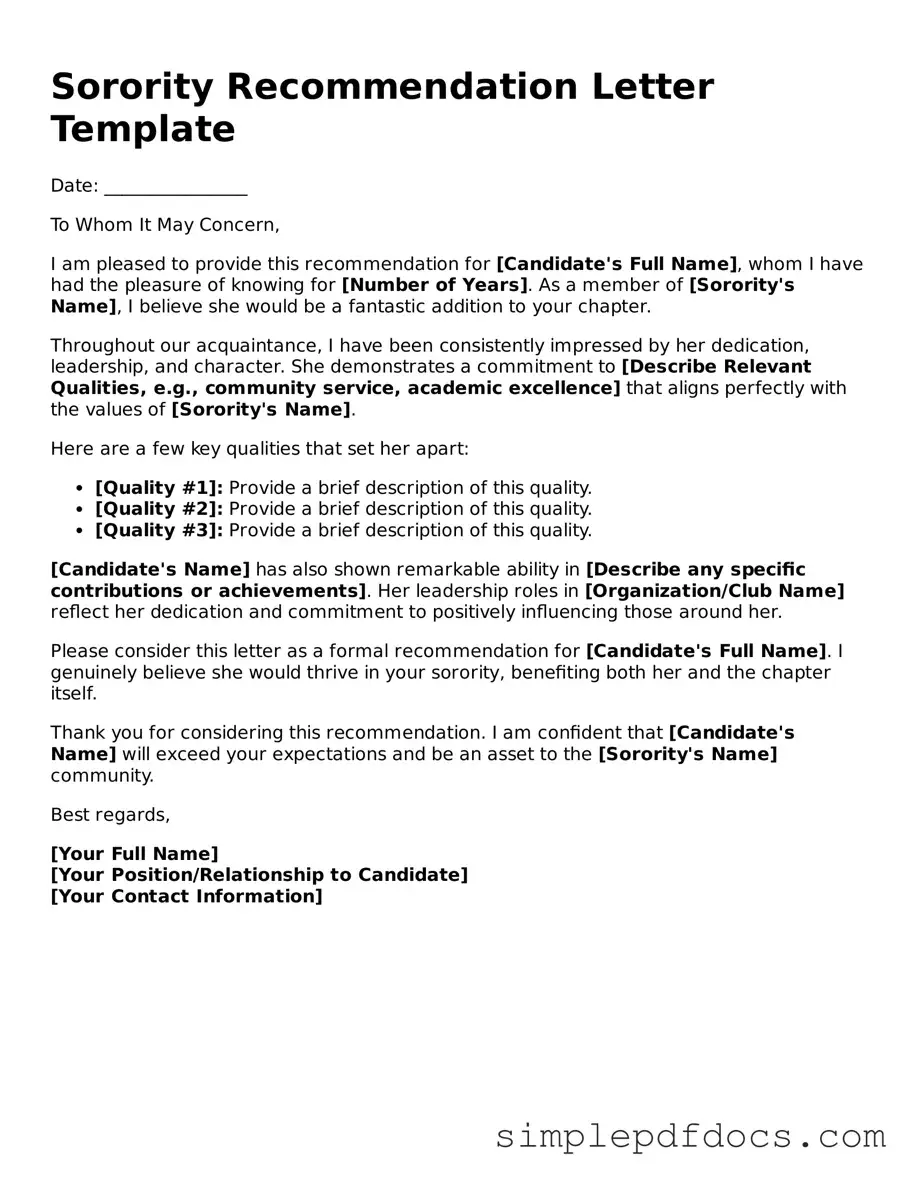Attorney-Approved Sorority Recommendation Letter Form
The Sorority Recommendation Letter form is a document that helps prospective members secure a place in a sorority by providing a formal endorsement from a current member or alumna. This letter highlights the candidate's strengths, character, and suitability for membership. Understanding how to properly complete this form can significantly enhance a candidate's chances of being accepted into their desired sorority.
Get Document Here
